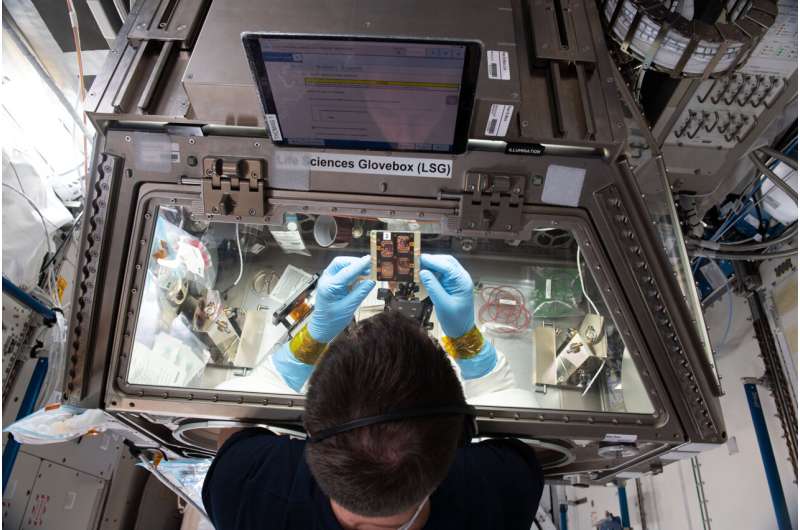As space travel becomes more common and available to civilians, it's important to understand what happens to our muscles in microgravity."
To understand the effects of microgravity on muscles, the researchers launched muscle chips—bioengineered packages of oriented muscle cells on patterned biomaterials that mimic the structure of real muscles—into space to grow for seven days under astronauts' care.
When the researchers compared muscle cells grown in microgravity to those grown on Earth, they found impaired muscle fiber formation. They also discovered differences in their gene activity and protein profile. Genes related to mitochondrial function, which muscles get their energy from, were compromised, and genes associated with fat formation were boosted.
These findings suggest microgravity can lead to dysfunctions in muscle regeneration.
Space-traveled muscles also have gene activities that somewhat resemble muscles with sarcopenia, which most commonly affects people ages 60 and older.
"We think our research on muscle chips in microgravity may have broader implications for sarcopenia," says Huang. "Sarcopenia usually takes decades to develop on Earth, and we think that microgravity may have some ability to accelerate the disease process in orders of days."
In a proof-of-concept experiment to test the muscle chip for drug screening, the astronauts spiked the chips with drugs to treat sarcopenia or enhance muscle regeneration. The treatment partially mitigated some of the negative effects of microgravity on the muscles, preventing a metabolic shift to fat formation.
Looking into gene activity patterns, the drug-treated muscle in microgravity is more similar to samples from Earth than untreated samples in microgravity.
Because space research is labor and resource intensive, the current study is a one-time experiment, and a limited number of samples were allowed to board the rocket. The scientists are now deploying equipment that simulates microgravity to overcome some of those limitations and aid their research in space.
Huang's muscle chips are scheduled to embark on another space journey in 2025 to continue the research on identifying drugs for treating microgravity-induced impairment in muscle regeneration.
"This concept of engineered tissue chip platform in microgravity is a potentially transformative tool that could allow us to study a variety of diseases and do drug screening without animal or human subjects," says Huang.
More information: Skeletal Muscle-On-A-Chip in Microgravity As a Platform for Regeneration Modeling and Drug Screening, Stem Cell Reports (2024). DOI: 10.1016/j.stemcr.2024.06.010. www.cell.com/stem-cell-reports … 2213-6711(24)00190-5
Journal information:Stem Cell Reports
Provided by Cell Press



